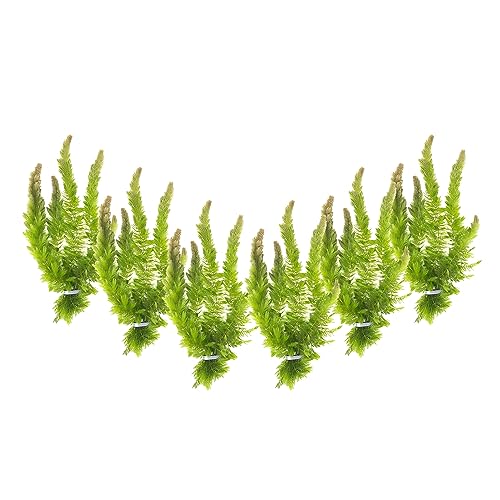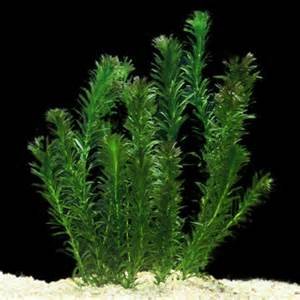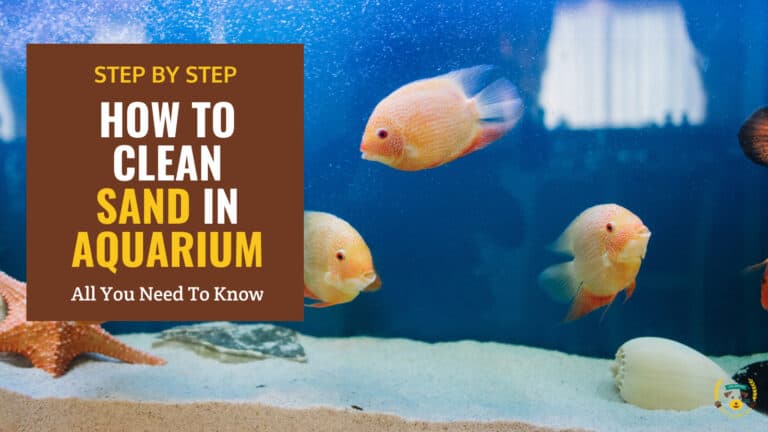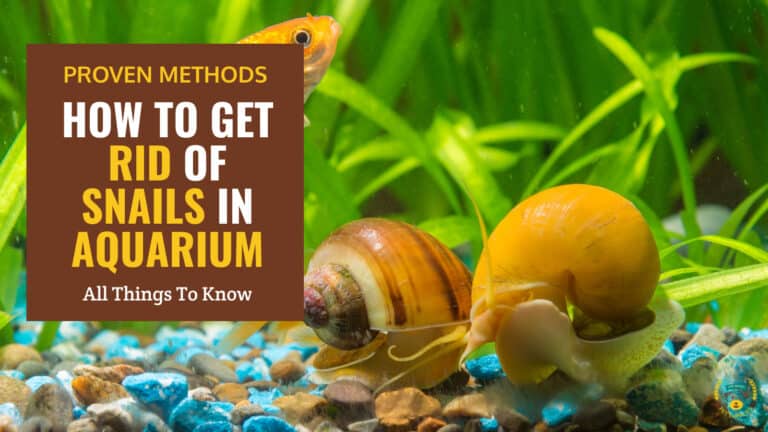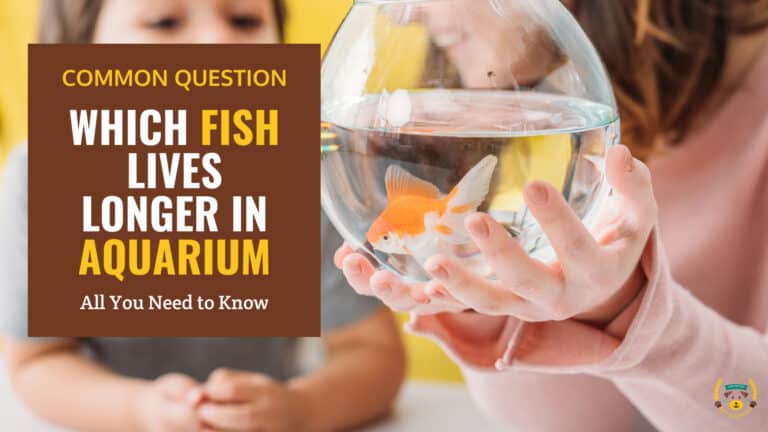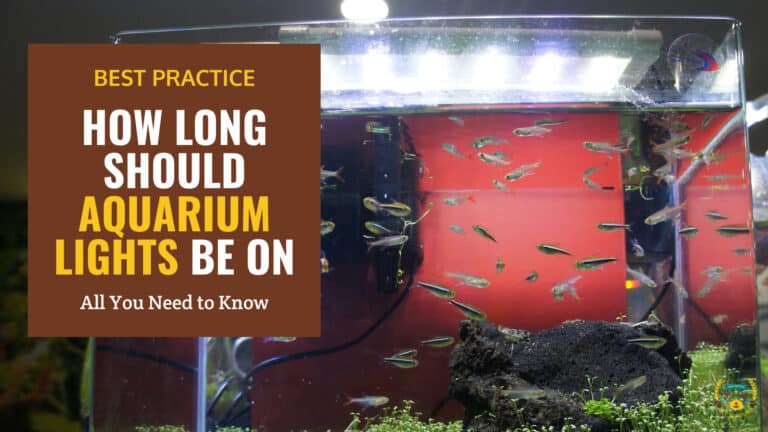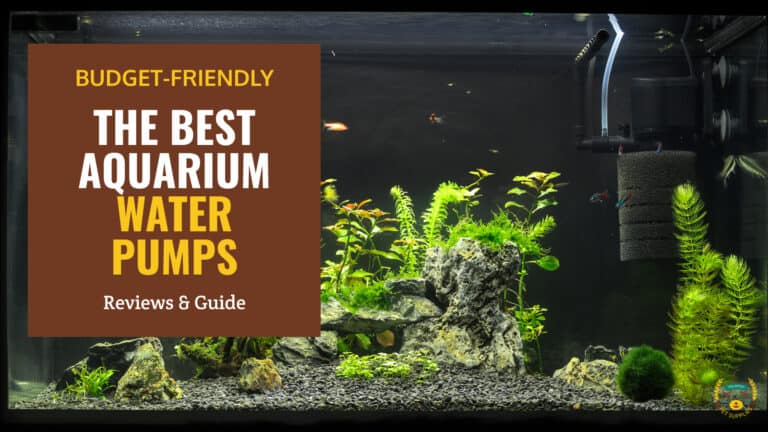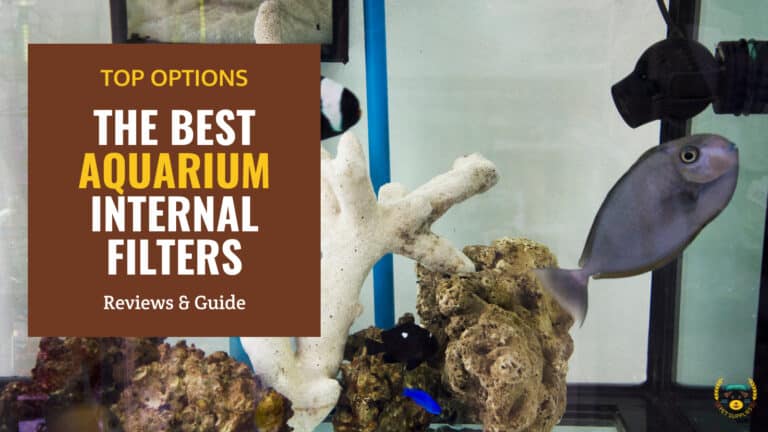10 Best Floating Plants for Aquarium - Reviews & Guide
Last updated: March 30, 2024
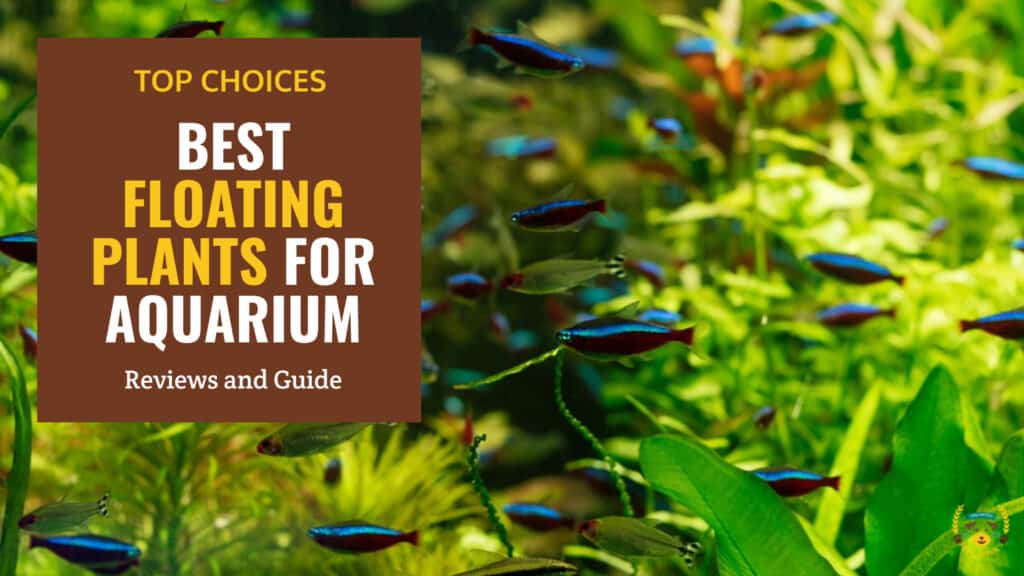
Summary
Our top pick for the Best Floating Plant is Hornwort because of its feathery green leaves that grow quickly and soak up excess nutrients. It provides dense cover and releases oxygen. Hornwort is easy to propagate by trimming and replanting stems, requiring moderate to high light.
Floating aquatic plants can be a great addition to freshwater aquariums. Unlike rooted plants, floating varieties have roots that dangle freely in the water rather than anchoring to the substrate. Allowing these plants to float unrestrained at the water's surface provides a number of advantages for the aquarium environment.
One key benefit is that floating plants help regulate water quality by absorbing excess nutrients from the water column. As they grow, many floating plants will uptake nitrogen compounds like nitrates and nitrites, along with phosphates and other minerals. This helps prevent the buildup of these nutrients which can negatively impact water parameters. Their hanging roots and foliage also provide shelter and hiding spots for shy fish as well as fry and young shrimp.
In addition to their functional benefits, floating plants can be used to enhance the aquascape aesthetically. There are many different floating plant species to choose from that offer a wide variety of leaf shapes, sizes and colors.
In this article, we will provide a list of the most common floating plants to use in your aquarium, provide an overview of their benefits and needs and provide suggestions you can directly buy from Amazon.
-
1)
Our Top Recommended Floating Plants & Where to Buy Them
- 1.1) Hornwort (Ceratophyllum Demersum)
- 1.2) Anacharis (Egeria densa)
- 1.3) Cabomba (Cabomba caroliniana)
- 1.4) Amazon Frogbit (Limnobium Laevigatum)
- 1.5) Rotala indica
- 1.6) Red Root Floaters (Phyllanthus Fluitans)
- 1.7) Duckweed (Lemna minor)
- 1.8) Water Wisteria (Hygrophila difformis)
- 1.9) Java Moss (Vesicularia Dubyana)
- 1.10) Salvinia Auriculata
- 2) Important Considerations When Choosing Floating Plants
- 3) Caring for Floating Plants
- 4) Frequently Asked Questions
- 5) Final Thoughts
Our Top Recommended Floating Plants & Where to Buy Them
There are many excellent floating plant options to consider for aquariums. Some of the top choices include the following:
Hornwort (Ceratophyllum Demersum)
Hornwort is a popular floating plant with feathery, forked green leaves. It grows quickly and is excellent for soaking up excess nutrients like nitrates and phosphates. Hornwort provides dense cover and releases oxygen. Easy to propagate by trimming and replanting stems. These plants require moderate to high light.
Anacharis (Egeria densa)
Also known as Elodea, anacharis has long green stems and small leaves. A versatile beginner plant that grows rapidly under moderate light.
It is great for absorbing nitrogen compounds and adding oxygen. Anacharis also provides hiding places for fry when allowed to reach the surface. It also propagates through cuttings.
Cabomba (Cabomba caroliniana)
Hailing from Brazil's rivers and lakes, Cabomba caroliniana is a visually striking aquatic plant. Its submerged leaves form airy, fan-like fronds reaching up to 2 meters tall that gently flutter in aquarium currents. Smaller elliptic floating leaves dot the water's surface. Delicate white flowers with vivid yellow, pink or violet centers emerge above the water.
This South American native thrives under full spectrum lighting, preferring a pH between 4-6. Caroliniana helps filter waste while providing cover for spawning fish. Dense growth fills out aquascapes nicely when combined with shorter plants. Outside of tanks, cabomba can become invasive in warmer climates. But its beauty and hardiness make it a mainstay for aquarists. Given proper conditions and pruning, cabomba forms a dramatic, oxygenating backdrop reminiscent of its natural flowing stream habitat.
Amazon Frogbit (Limnobium Laevigatum)
Amazon Frogbit features rounded floating leaves with a waxy texture. It grows best in bright, shallow water, and the leaves shade the water column below.
Frogbit Absorbs nutrients efficiently and helps reduce algae growth. These plants propagate through offshoots.
Rotala indica
Rotala indica is a vibrant freshwater stem plant that adds striking visual appeal to aquarium setups. Growing up to 12 inches tall, its slender green stems produce horizontal oval leaves in lush bushes. Under high lighting and added CO2, the leaf tips transition to a vivid red coloration. The delicate leaves demand gentle care, but propagating indica is as simple as trimming and replanting stem cuttings.
A native of southeast Asia, indica thrives in moderately bright lighting and benefits from aquarium soil and added carbon dioxide supplementation. Planted in bunches, its rapid growth requires frequent trimming to maintain thickness. By pruning strategically, you can sculpt beautifully dense bunches of indica.
With its dazzling coloration and abundant growth, rotala indica makes a dramatic background focal point. Moderate care requirements make this Loosestrife family plant an excellent choice for beginners seeking an impressive aquatic accent.
Red Root Floaters (Phyllanthus Fluitans)
Distinctive clover-shaped leaves with red undersides make this floater stand out. It is slow-growing, so it doesn't require frequent trimming.
Extensive roots provide shelter for fry and absorb excess nutrients. These plants propagate by dividing mature plants and thrive in high-light tanks.
Duckweed (Lemna minor)
The tiny leaves of duckweed multiply rapidly to form a thick floating mat. This is an excellent nutrient absorber that helps reduce algae and provides overhead cover and spawning sites.
Their aggressive growth requires thinning to prevent overtaking the tank. Duckweed can tolerate low to moderate light.
Water Wisteria (Hygrophila difformis)
Hygrophila difformis, commonly known as water wisteria, is a tropical freshwater plant cherished for its graceful, flowing appearance. With feathery green leaves on trailing stems, it sways gently under moderate aquarium water flow. Easy to propagate from cuttings, difformis grows rapidly under sufficient lighting and fertilization, readily filling out aquatic landscapes.
A rich substrate and medium to high illumination bring out this Asian plant's full potential. While added carbon dioxide supplementation is not essential, it significantly boosts growth speed and lushness. Water wisteria's vibrant green foliage provides ambiance, and its trailing nature makes it ideal for cascading down rock formations.
Between its hardiness, tranquil aesthetic, and ease of care, it's easy to see why Hygrophila difformis is a mainstay of tropical aquascapes. Even novice aquarists can expect rewarding results from this gratifying freshwater species.
Java Moss (Vesicularia Dubyana)
As a versatile low-light option, Java moss forms a tangled carpet of fine green strands. it grows slowly but propagates through fragmentation.
Java Moss provides cover and surfaces for egg scattering. Attaching these plants to the decor helps create a natural appearance in your tank.
Salvinia Auriculata
Salvinia auriculata, also known as giant salvinia, is a popular floating aquatic fern. Reaching sizes of 1-3 cm, it thrives under bright lighting and ample nutrition, propagating rapidly across the water's surface. The small hairs covering salvinia's leaves make them water-resistant, enabling the plant to float effortlessly.
In home aquariums, giant salvinia provides lush greenery and shade. Its fast growth allows it to spread and cover large areas, creating shaded zones that help limit algae growth by blocking light penetration. However, salvinia can also shade other plants below if allowed to completely overtake the surface.
Proper pruning keeps its size in check. With its vibrant green leaves, easy care and natural algae prevention, giant salvinia makes an attractive addition to open-top freshwater aquarium setups.
Important Considerations When Choosing Floating Plants
When selecting floating plants for your freshwater aquarium, there are several key factors to take into account before making your choices. Carefully considering variables like growth rate, lighting needs, tank size suitability and your aesthetic goals will help you pick the best floating plants for your particular setup.
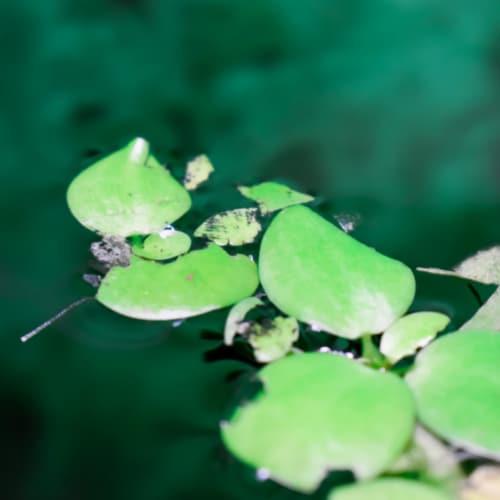
Growth Rate
One important consideration is how quickly different floating plant species grow. Some varieties like hornwort and anacharis grow rapidly, while others like java moss have a slower, more compact growth habit.
Fast-growing plants can help quickly soak up excess nutrients in the tank, but usually require more frequent trimming and maintenance to keep them under control. Slower growers may take longer to establish but don’t take over the tank as aggressively.
Lighting Needs
Available lighting is another essential factor, as different floating plants have higher or lower light requirements. Most floating plants require moderate to high-intensity lighting to support photosynthesis. Plants like red root floaters need strong lighting to thrive, while salvinia and frogbit can tolerate lower to medium light tanks.
Matching the plants to the light levels in your aquarium will promote healthier growth. Use full spectrum bulbs and allow 8-12 hours of daily illumination tailored to your plants' needs.
To ensure that your aquarium's lighting aligns not only with your plants' needs but also with the overall health of your aquatic environment, it is crucial to understand the optimal lighting time for healthy aquariums. Setting the correct photoperiod is key to maintaining balance in your tank, and can vary based on factors such as tank size, type of inhabitants, and the presence of live plants
Tank Size Suitability
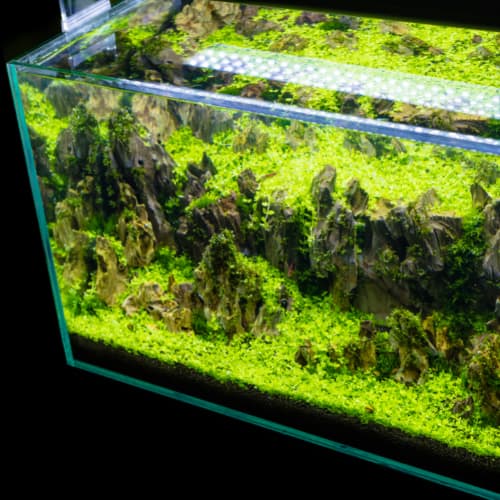
The size of your aquarium also determines which floating plants are appropriate. Larger varieties like water lettuce may quickly overrun smaller tanks, so compact nano varieties are better suited. Plants with vertical growth habits rather than spreading across the surface also work better in cramped spaces.
Aesthetic Goals
Lastly, consider the visual look you want to achieve in choosing floating plants. Mixing varieties with different leaf shapes and colors creates an appealing diversity. Or stick to one type for a cohesive look. Just be mindful of combining fast and slow-growing species, as the more aggressive ones may crowd out slower growers over time.
With these factors in mind, you can select floating plants tailor-made for your aquarium setup and design goals. Careful plant selection allows these floating beauties to enhance any freshwater tank.
Caring for Floating Plants
To keep floating aquarium plants healthy and thriving, it's important to provide proper care and maintenance by attending to their lighting, nutrition, and pruning needs.
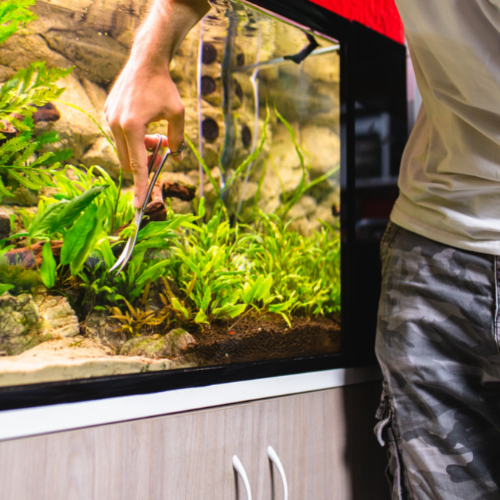
Nutrient Requirements
Floating plants mainly get nutrients like nitrogen, phosphorus and potassium from the water itself rather than the substrate. Use a water tester regularly and use liquid fertilizers to maintain optimal levels. The plants will help absorb excess nutrients that cause algae overgrowth.
Tank Maintenance and Pruning
Regular tank maintenance is crucial for maintaining a healthy aquarium environment. This includes cleaning the aquarium glass, removing debris, and performing partial water changes. It's also important to clean sand from the aquarium to prevent the build-up of waste products and ensure good water quality for your fish and plants.
To manage growth, trim fast-growing floaters often by removing extra leaves or stems. This helps with propagation too. Remove any dead or decaying plant matter to prevent fouling the aquarium water. Use aquarium tongs and gentle motions when pruning delicate floating plants.
Check Also: 9 Cloudy Aquarium Water Causes and Solutions
Propagation Techniques
Many floating plants easily propagate through plantlets, runners or stem and leaf cuttings. Simply trim healthy plant parts and allow them to float freely - they'll root and form new plants easily under proper conditions.
Troubleshooting Common Problems
Issues like stunted growth, yellowing leaves or floating plants dying out suddenly usually indicate insufficient lighting or nutrients.
In such cases, try to make adjustments to light levels, fertilization and tank maintenance to get your plants thriving again.
Frequently Asked Questions
Let's now answer some frequently asked questions to help you provide the best care possible for your tank inhabitants, including the floating plants.
Do floating plants help aquariums?
Floating aquarium plants, such as duckweed, frogbit, and water lettuce create natural hiding spots and break lines of sight for breeding fish and newborn fry, providing shelter and reducing stress.
By absorbing fish waste at the water's surface, these plants contribute to water cleanliness, particularly beneficial for vulnerable young fish.
Additionally, floating plants help maintain water quality by absorbing excess nutrients and shading areas for fish seeking relief from bright light.
They also compete with algae for resources, aiding in algae control. While they require careful monitoring to prevent overgrowth, floating plants can enhance aquascapes by adding depth and surface interest.
Do floating aquarium plants need co2?
No, floating aquarium plants do not typically require a CO2 system. These plants obtain their carbon needs from the surrounding air due to their emersed leaves, making a CO2 system unnecessary.
They primarily rely on nutrients from the water, like nitrates and phosphates, and their photosynthesis generates oxygen without the need for added carbon dioxide.
Do floating plants stop algae?
Yes, floating plants like Water Hyacinths and Water Lettuce can help inhibit algae growth. By creating shade and preventing excessive sunlight from reaching the water surface, these plants limit the conditions that promote algae development.
The shade they provide helps control water temperature and minimizes the availability of light, which is essential for algae to thrive, making floating plants an effective means to reduce algae-related issues in an aquarium or pond.
Do floating plants reduce ammonia?
Floating plants can help reduce ammonia levels in an aquarium or pond, but they might not be as efficient as some rooted plants in ammonia absorption. They mainly absorb ammonia through their leaves rather than roots. While they do play a role in nutrient absorption and water purification, rooted plants are often more effective at ammonia consumption due to their increased nutrient requirements.
Nonetheless, floating plants can contribute to maintaining water quality and promoting a healthier aquatic environment by assisting in ammonia removal.
Is fish poop good for aquatic plants?
Fish waste, which includes their excrement, can serve as a beneficial fertilizer for aquatic plants when employed in aquaponics systems. In this setup, fish are reared in tanks, and the nutrient-rich water containing their waste is directed to hydroponic trays where aquatic plants grow. While the waste is harmful to the fish if not managed, it becomes a valuable source of nutrients for the plants, promoting their growth and serving as a natural fertilizer.
How fast do plants remove nitrates?
The rate at which plants remove nitrates can vary based on factors such as plant species, environmental conditions, and nitrate concentrations. In one specific scenario, plants placed in a nutrient solution containing 0.025 mg/l of nitrate-N took approximately 18 hours to completely absorb the nitrates. This suggests that nitrates may be removed more slowly compared to other forms of nitrogen, such as ammonium, which were taken up by similar plants in the same concentration of 0.025 mg/l of ammonium-N in approximately 3.9 hours.
Final Thoughts
Floating plants are versatile and beneficial additions to aquariums. They help regulate water parameters, provide cover and enhance aesthetics. However, they require some maintenance and attention to their needs so they can thrive and be healthy.
Consider growth habits, light and tank size needs when selecting species. With proper care floating plants can flourish while keeping your aquarium healthy.
If you still have any questions or comments related to the topic, please leave a comment in the section below or contact us via email.
Thanks for reading!

